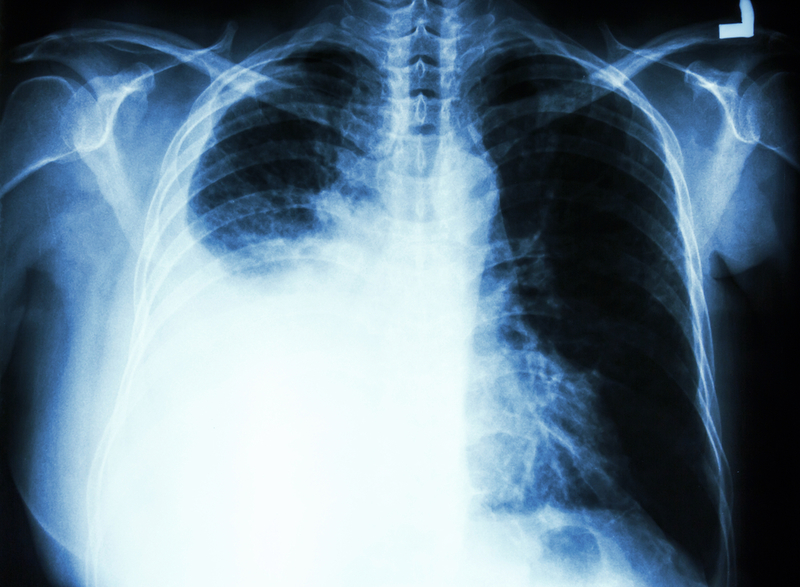ATS' new guideline recommends minimally invasive ways of treating MPEs
Newswise Oct 03, 2018

A new guideline to help clinicians manage malignant pleural effusions (MPEs) has been developed by the American Thoracic Society, the Society of Thoracic Surgeons, and the Society of Thoracic Radiology. The clinical practice guideline is published online in the October 1 American Journal of Respiratory and Critical Care Medicine.
MPEs account for 125,000 US hospital admissions each year that are estimated to cost $5 billion. Patients diagnosed with a MPE live on average for 4 to 7 months.
Given this short survival period, and the fact that the majority of patients with MPE have significant dyspnea, the 14-member international panel of experts that produced the guideline said that an emphasis should be placed on patient-centered outcomes, such as relieving dyspnea in a minimally invasive manner and reducing, if not eliminating, the need for repeated procedures and health-care visits.
“In the 17 years since the ATS published its first guidelines on the management of MPE, there has been a significant amount of high-quality research that significantly improves our care of these patients,” said panel co-chair David J. Feller-Kopman, MD, professor of medicine and director of interventional pulmonology at Johns Hopkins Hospital. He noted that guidelines published by the British Thoracic Society in 2010 have not been universally adopted.
He added, “These new recommendations are the effort of a multidisciplinary group with representation from pulmonary, thoracic surgery, and thoracic radiology with the goals of highlighting recent research and increasing ‘buy in’ due to the collaboration of multiple societies.”
In formulating the guideline, the panel developed seven questions using the PICO (Population, Intervention, Comparator, and Outcomes) format. They then reviewed studies, including recent, large, randomized controlled trials, and rated the quality of study findings, along with the certainty of the panel’s recommendations, using the GRADE (Grading of Recommendations, Assessment, Development, and Evaluation) system.
The panel made the following recommendations:
•In patients with known or suspected MPE, we suggest that ultrasound imaging be used to guide pleural interventions (conditional recommendation, very low con?dence in estimate of effects).
•In patients with known or suspected MPE who are asymptomatic, we suggest that therapeutic pleural interventions not be performed (conditional recommendation, very low con?dence in estimate of effects). The panel noted, however, if pleural fluid is required for diagnostic purposes, fluid and/or tissue sampling would be appropriate.
•In patients with symptomatic MPE, we suggest large-volume thoracentesis if it is uncertain whether the patient’s symptoms are related to the effusion and/or if the lung is expandable (the latter if pleurodesis is contemplated) to assess lung expansion (conditional recommendation, very low con?dence in estimate of effects).
•In patients with MPE with known (or likely) suspected expandable lung and no prior de?nitive therapy, and whose symptoms are attributable to the effusion, we suggest that either indwelling pleural catheters (IPCs) or chemical pleurodesis be used as ?rst-line de?nitive intervention for management of dyspnea (conditional recommendation, low con?dence in estimate of effects). When choosing one option over the other, the panel wrote, clinicians should factor in a patient’s values and preferences.
•In patients with symptomatic MPE and expandable lung undergoing talc pleurodesis, we suggest the use of either talc poudrage or talc slurry (conditional recommendation, low con?dence in estimate of effects).
•In patients with symptomatic MPEs with nonexpandable lung, failed pleurodesis, or loculated effusion, we suggest the use of IPCs over chemical pleurodesis (conditional recommendation, very low con?dence in estimate of effects).
•In patients with IPC-associated infections, treating through the infection without catheter removal is usually adequate. We suggest catheter removal if the infection fails to improve (conditional recommendation, very low con?dence in estimate of effects).
“Clearly, guidelines are just that, guidelines,” Dr. Feller-Kopman emphasized. “We, as authors, want to stress the importance of individualizing patient care based on patient-specific goals and values, in addition to local expertise and resources.”
He added the guideline also emphasizes areas for future research, with a focus on “patient-reported outcome measures rather than on secondary endpoints, such as radiographic improvement.”
—Newswise
-
Exclusive Write-ups & Webinars by KOLs
-
Daily Quiz by specialty
-
Paid Market Research Surveys
-
Case discussions, News & Journals' summaries